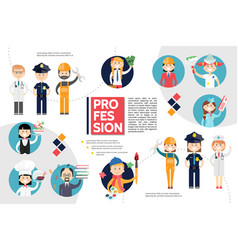Investigate The Duty Of Seasonal Factors In The Success Of Commercial Outside Paint And Reveal The Most Effective Times To Protect Long Lasting Results For Your Task
Investigate The Duty Of Seasonal Factors In The Success Of Commercial Outside Paint And Reveal The Most Effective Times To Protect Long Lasting Results For Your Task
Blog Article
Short Article By-Doherty Rodriquez
When you're planning an industrial exterior paint job, seasonal variables can make or break your outcomes. You'll intend to take into consideration exactly how temperature and moisture influence paint application and drying times. Choosing the best season can guarantee your paint adheres appropriately and lasts much longer. But which seasons are truly the very best for this sort of work? Let's discover the crucial elements that can impact your project's success.
The Impact of Temperature Level on Paint Application
When you're planning a commercial external paint task, the temperature can considerably affect exactly how well the paint sticks and dries out.
Ideally, you intend to paint when temperatures vary between 50 ° F and 85 ° F. If it's too cool, the paint may not treat properly, causing issues like peeling off or splitting.
On the flip side, if it's also hot, the paint can dry out also promptly, avoiding appropriate bond and leading to an irregular coating.
You ought to likewise consider the moment of day; morning or late afternoon uses cooler temperatures, which can be extra favorable.
Always check the maker's recommendations for the specific paint you're making use of, as they usually provide support on the perfect temperature array for optimal results.
Moisture and Its Impact on Drying Times
Temperature level isn't the only ecological factor that affects your commercial exterior painting project; moisture plays a considerable duty also. High humidity levels can reduce drying out times dramatically, impacting the overall quality of your paint task.
When the air is filled with dampness, the paint takes longer to treat, which can lead to problems like poor bond and a higher danger of mold growth. If you're painting on a particularly moist day, be planned for prolonged delay times in between layers.
It's vital to keep track of regional weather conditions and plan as necessary. Ideally, go for linked site between 40% and 70% for optimal drying.
Maintaining these factors in mind guarantees your project stays on track and delivers a long lasting finish.
Best Seasons for Commercial Exterior Paint Projects
What's the most effective time of year for your industrial external painting jobs?
Spring and early loss are usually your best bets. Throughout these seasons, temperature levels are light, and humidity degrees are usually reduced, creating suitable conditions for paint application and drying out.
Avoid summer season's intense heat, which can cause paint to dry also rapidly, bring about poor attachment and coating. Likewise, winter months's cold temperature levels can prevent correct drying and treating, risking the long life of your paint task.
Aim for days with temperature levels between 50 ° F and 85 ° F for optimum results. Remember to inspect the neighborhood weather prediction for rain, as damp problems can destroy your project.
Planning around these elements guarantees your paint task runs efficiently and lasts longer.
Verdict
Finally, preparing your industrial outside painting tasks around seasonal factors to consider can make a significant difference in the outcome. By scheduling work throughout the ideal temperatures and humidity levels, you'll guarantee much better bond and drying out times. Keep in mind to watch on local weather report and pick the right time of year-- spring and very early fall are your best bets. Taking commercial painting fort worth will certainly aid you attain a durable and professional finish that lasts.
